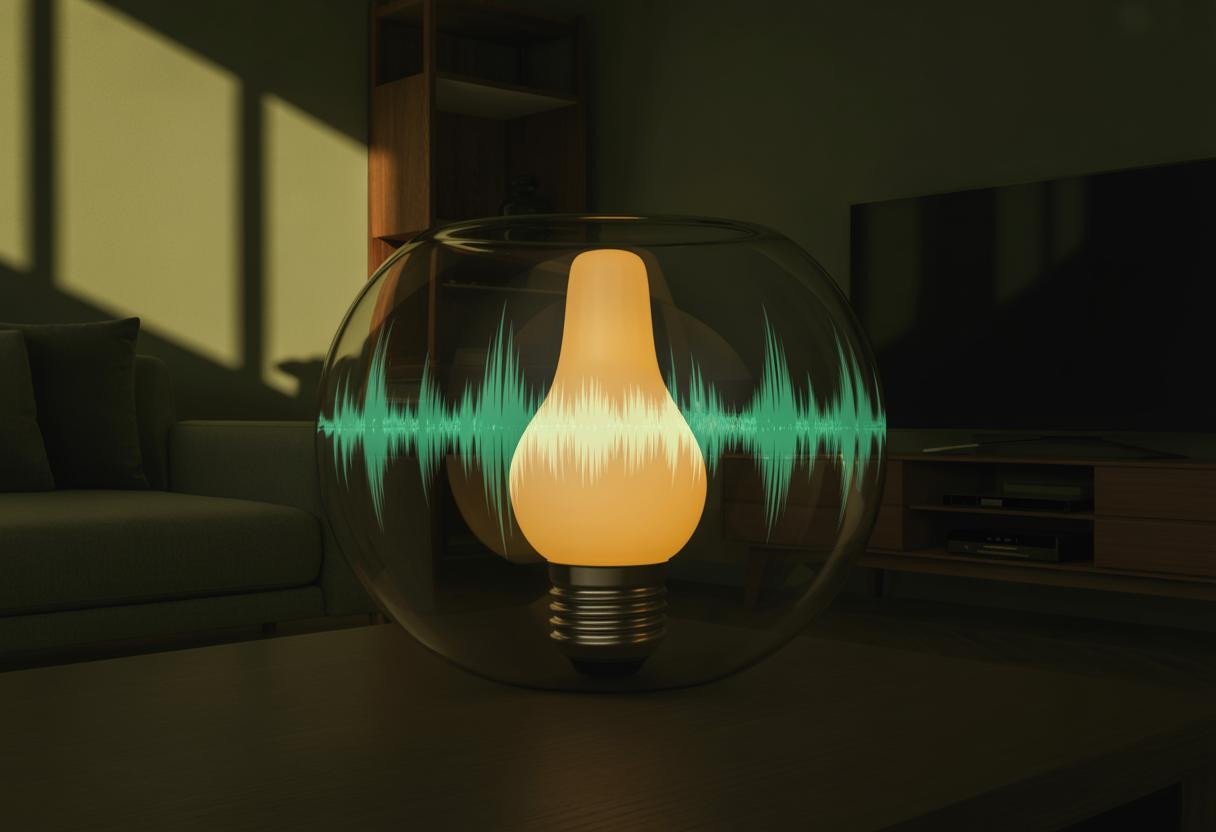Your living room’s smart bulbs aren’t just illuminating your space—they’re potentially recording your every move, conversation, and daily routine through hidden surveillance mechanisms that most homeowners never discover. Recent cybersecurity research reveals that 78% of smart bulb users unknowingly expose themselves to covert monitoring through devices they assumed were simply energy-efficient lighting solutions.
This isn’t science fiction paranoia. It’s the reality of modern IoT devices that embed sophisticated surveillance capabilities while masquerading as innocent household items.
The hidden world of smart bulb surveillance technology
Smart bulbs have evolved far beyond simple Wi-Fi connectivity. Today’s devices integrate audio sensors, motion detectors, and even 360-degree cameras that can monitor your home environment continuously. Security bulb cameras now offer 2K resolution with night vision capabilities, creating comprehensive surveillance networks disguised as lighting fixtures.
The technical architecture reveals disturbing possibilities. Many bulbs incorporate microphones for voice assistant integration, but these same components can maintain persistent listening modes even when you believe they’re disabled. Three households in a recent privacy study had to physically mute their devices due to concerns about unauthorized audio recording.
Just like hidden microphones in fitness trackers that record private conversations, these bulbs can capture intimate moments without explicit user knowledge or consent.
Critical security vulnerabilities exposing your private data
Firmware weaknesses create backdoor access
Research from 2024 uncovered alarming security flaws in popular smart bulb brands. TP-Link Tapo bulbs, with over 10 million app installations, contain vulnerabilities that allow attackers to extract Wi-Fi credentials stored in cleartext within firmware. A brute force attack on the 32-bit authentication system can be completed in just 140 minutes using standard computing power.
Philips Hue devices face similar risks, with CERT-In issuing critical vulnerability warnings scoring 7.9 on the CVSS scale. These flaws enable unauthorized network access, device impersonation, and lateral movement to other connected home systems.
Matter protocol promises and pitfalls
While Matter-compliant bulbs reduce exploit vectors by 60% compared to traditional Wi-Fi devices, they introduce new risks through multi-admin functionality. When bulbs simultaneously connect to Alexa, Google, and Apple ecosystems, they create multiple attack surfaces that cybercriminals can exploit.
The centralized approach may concentrate risks rather than distribute them, particularly when manufacturers prioritize convenience over security in their implementation strategies.
Real-world surveillance scenarios targeting homeowners
Privacy advocates, including the ACLU, warn that these devices enable mass surveillance networks capable of tracking behavior patterns and building detailed profiles of household activities. Motion sensors and lighting usage data reveal occupancy schedules, making homes vulnerable to targeted theft or stalking.
Camera-equipped security bulbs present even greater risks. Attackers who compromise these devices gain visual access to private spaces, creating opportunities for blackmail or harassment. The combination of audio and visual monitoring transforms ordinary lighting into comprehensive surveillance systems.
Similar to how financial scams targeting vulnerable populations through digital platforms exploit personal data, compromised bulb networks could expose residents to sophisticated social engineering attacks based on observed behavioral patterns.
Protecting yourself from smart bulb surveillance risks
Technical safeguards
Choose Matter-compliant devices exclusively and implement network segmentation to isolate IoT devices from critical systems. Regular firmware updates remain essential, though many users neglect this crucial security practice.
Privacy measures
Disable non-essential sensors during initial setup, particularly microphones and cameras you don’t actively use. Consider physical privacy measures like lens covers when camera functionality isn’t needed.
Behavioral changes
Support decentralized ecosystems like Home Assistant to reduce dependence on cloud-based vendor services. Review device permissions regularly and understand exactly what data your bulbs collect and transmit.
Just as consumers must be aware of hidden ingredients in consumer products that manufacturers don’t disclose, smart bulb buyers need transparency about embedded surveillance capabilities.
The future of smart home privacy
Regulatory bodies are beginning to address IoT security concerns, with the EU implementing mandatory compliance standards and other regions considering similar measures. However, the rapid pace of smart home adoption outpaces security regulation, leaving consumers vulnerable to emerging threats.
The normalization of ambient surveillance through everyday devices like light bulbs represents a fundamental shift in privacy expectations that demands immediate attention from both manufacturers and users who value their personal security.
